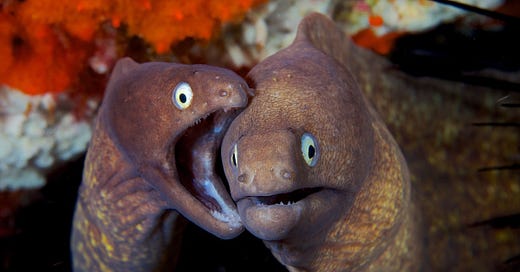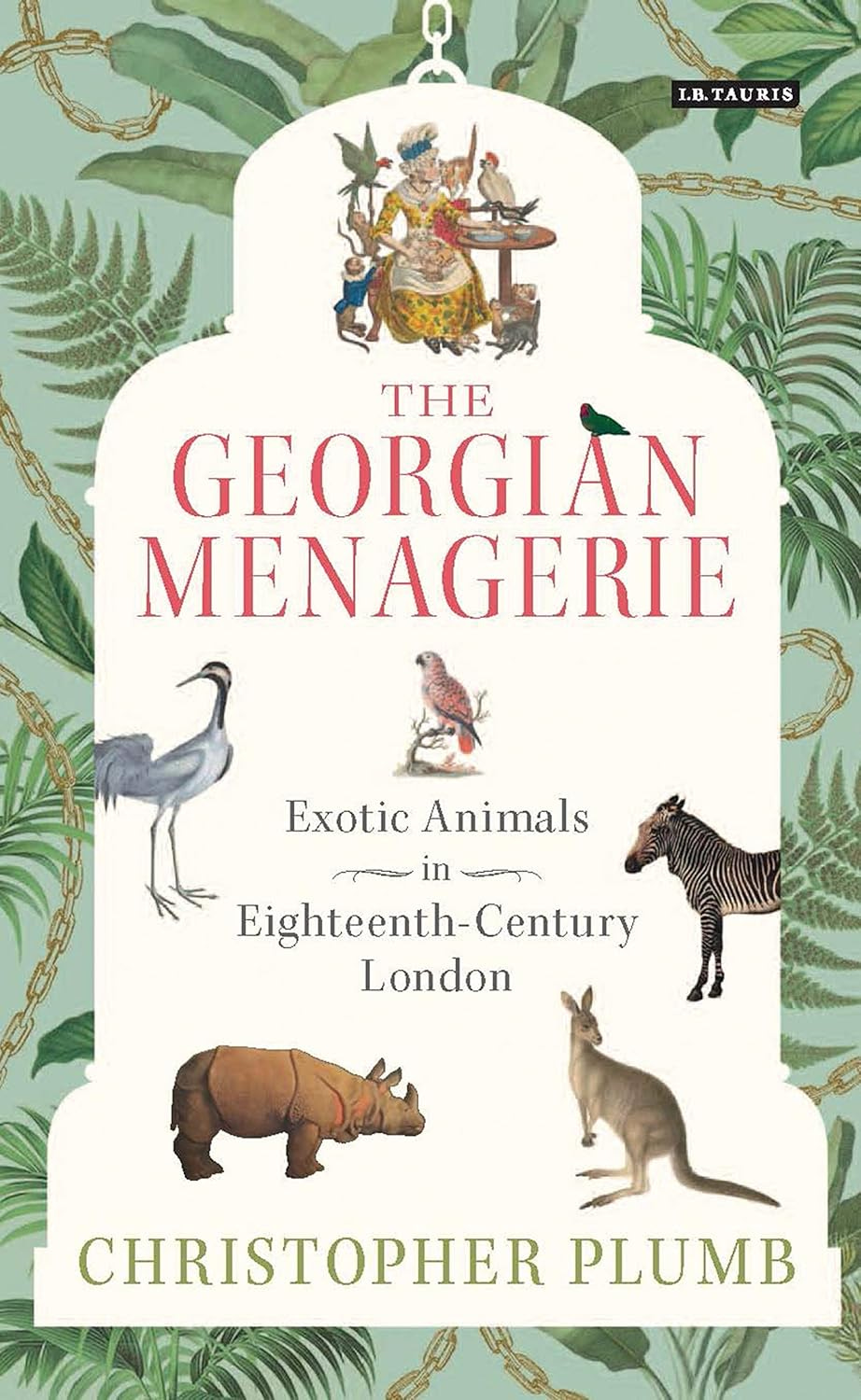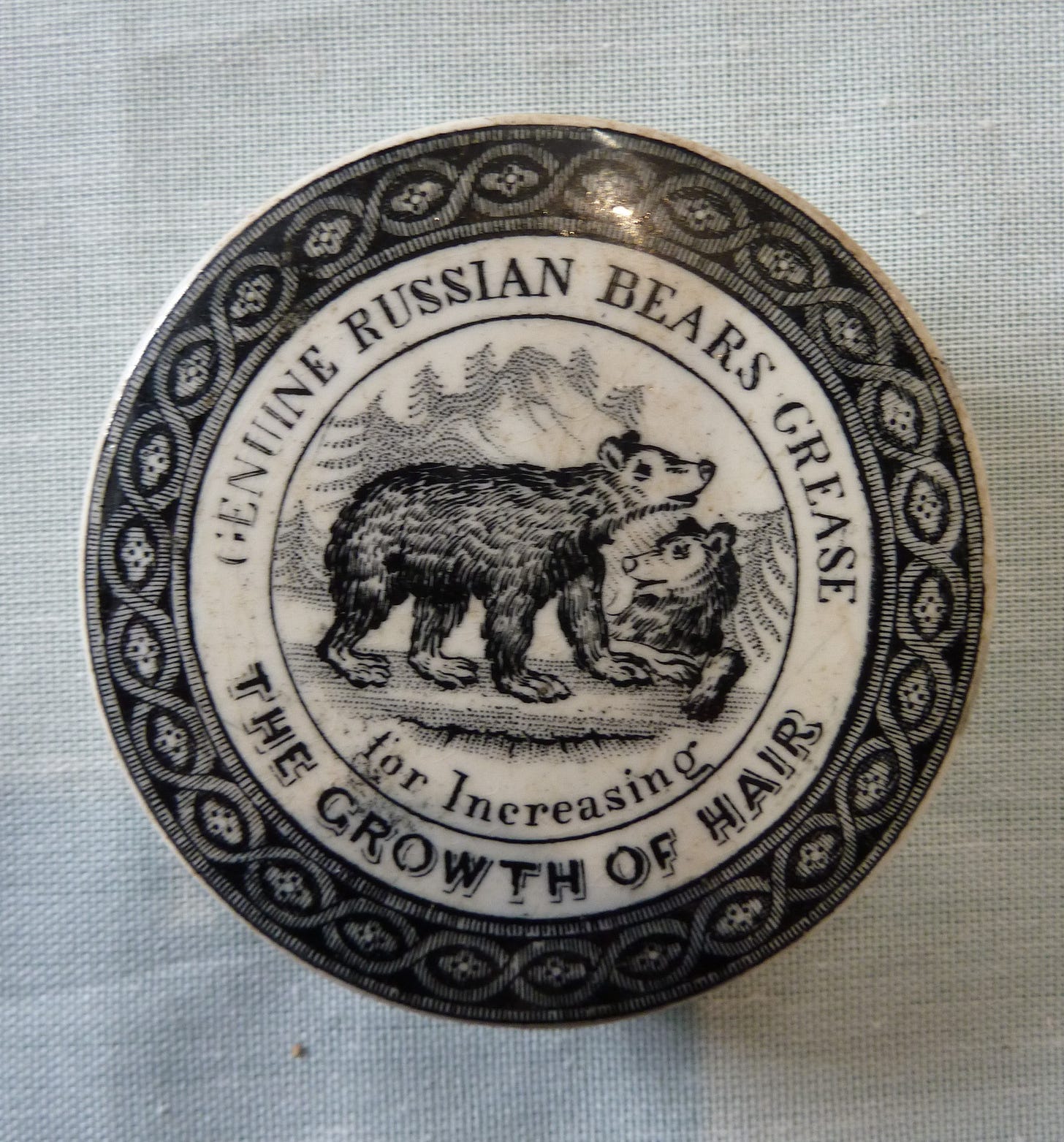It’s Saturday, when I like to dig through my archive of book reviews and throw some light on a book that tickled my fancy. Today I’m reprising my review of Christopher Plumb’s The Georgian Menagerie: Exotic Animals in Eighteenth Century London. Published in 2015 by I. B. Tauris, it’s a delightful little book about the English and their fondness for rare pets. It’s a bit of a diamond in the rough, since a better writer could have made this into a truly wonderful book. But the little anecdotes are sufficiently engaging to make this a worthy read.
Sometime in the late 18th century, a young Irishman was walking down Piccadilly when he spied a porter carrying a kangaroo. The kangaroo, considerably annoyed, bit his handler’s ear, nearly ripping it from his skull. The porter reacted by violently throwing the kangaroo onto the pavement, leaving it stunned. A passing drayman stopped to defend the poor animal ‘and … after several severe rounds gave the porter a hearty drubbing’, rendering his face ‘a hideous spectacle’. The porter then picked up the animal, put it in his cart, and delivered it to the wealthy Londoner who had bought it.
That anecdote is packed with messages and mysteries. A kangaroo? In London? Yes, apparently, there was a significant market for exotic animals back then. That market suggests that standards of animal welfare were considerably lower than today. No surprise there. Then again, the drayman did come to the aid of the kangaroo, not the porter, perhaps displaying that distinctive British sensitivity when it comes to animal cruelty. But the drayman then delivered the kangaroo to his owner, thus abandoning him to miserable captivity. So what should we draw from the incident? Who knows? I’m still confused.
The story is symptomatic of what’s wrong with Georgian Menagerie. Christopher Plumb is superb at finding wonderful examples of strange attitudes toward exotic animals in the 18th century. Marvellous anecdotes come at the reader two by two. Unfortunately, however, Plumb is reluctant to analyse; he seldom reflects on what these stories say about Georgian culture.
Perhaps it doesn’t matter. The weird stories alone are worth the price of this book, and maybe it’s okay that we’re left to draw our own conclusions. I was, for instance, struck by the fact that Gilbert Pidcock, who ran a menagerie on the Strand, bought a zebra for £300, a ‘handsome male lion’ for £400, a rhinoceros for £700 and a Jamaican slave named John Bobey for just 50 guineas. Bobey’s vitiligo gave him a piebald complexion, making him both worker and exhibit at Pidcock’s menagerie. ‘I will not be sold like the monkeys’, he complained. Fat chance, since that’s precisely what happened.
Clearly, the animal trade was governed by supply and demand. A rhinoceros was rare; a black Jamaican (even a piebald one) was not. In the Georgian era, exotic animals were conspicuous consumption. For example, for the price of one guinea, it was possible to rent a six-foot tall cassowary to provide entertainment at one’s dinner party. The price rose by a shilling per head if the guest list exceeded twenty-four. (That leaves me wondering whether it was a double-wattled cassowary, one of my favourite birds. Maybe not. Maybe a double-wattled cassowary would have cost double.) The market for weird animals was so lucrative that criminals would kidnap beasts and then hold them for ransom.
‘Consumption’ was sometimes literal; there was considerable cachet, for instance, in serving turtle – either roasted or as soup – at elegant soirees. The sight of a 400 pound roasted turtle as the centrepiece of a well-appointed table was undoubtedly impressive. The conspicuous expense of turtles arose from their rarity and from the difficulty of transporting them live – tinned turtle would not do. In point of fact, few people actually enjoyed the taste of turtle, but that was hardly the point. ‘I have lived in terror of having a turtle dinner all the days of my life’, reflected Lady Anne Barnard. That surely qualifies as a first world problem.
Another conspicuous commodity was bear grease, used to shape moustaches and wigs and also as a stimulant to hair growth. Cheap imitations were made from pig fat, but the discerning could tell the difference because grease from a bear carried a distinctively foul smell. So, too, did civet, the waxy yellow-brown secretion from the anal gland of the civet cat. Even more expensive than bear grease or turtle, it was used as an ingredient in perfume, even though its odour was, as the Scots would say, mingin. I guess that, in the right proportions, it gives perfume a musky odour which is irresistible. Civet was also sold as a cure for erectile dysfunction and as a ‘refreshing balsam’ for women who had ‘debilitated themselves greatly’ from taking ‘too much pleasure in themselves’. I’ll leave that one to the reader.
Electric eels were likewise expensive, chiefly because they had to be shipped from Guiana in tanks of fresh water, something rather difficult in the 18th century. Apparently, they were also in great demand, causing prices to rise. Wealthy women were particularly fond of taking hold of this long, muscular, cylindrical animal that gave off sparks. The keenness for eel fondling delighted erotic poets. One bawdy verse told of a ‘wanton dame’ who ‘covets every spark’ of a ‘brisk gallant lover’ whose ‘electric fire’ never failed to satisfy. Clearly, a trip to the eel-keeper was the 18th century equivalent of visiting Ann Summers for a new dildo. I’ve just discovered that a popular sex toy for women today is called an ‘electric eel’. Be careful what you Google.
Though an eel produced only mild shock, other exotic animals carried considerable danger. Georgian court records abound with cases of hands bitten off by lions, legs crushed by elephants, or chests impaled by rhinos. Society took a rather charitable attitude toward these incidents, probably because the animals were far too valuable to be destroyed. The beast was instead usually tried in court and, if convicted of assault, a small fine, or deodand, was imposed. When Thomas Soper suffered a painful and lingering death from a rattlesnake bite, the court levied a deodand of one shilling on the snake.
The age of animal-inspired eccentricity drew to a close after the establishment of the London Zoological Society in 1826. The zoo democratised the enjoyment of animals and, in the process, removed so much of the eccentricity that arose when the wealthy had exclusive access. I could go on and on with the wonderful examples of weirdness that flow from the pages of this extraordinary book. Plumb is clearly a historian in love with his topic, even if he is rather too reluctant to draw conclusions. Gandhi once said that the greatness of a nation is judged by how it treats its animals. I’m still not sure what that says about Georgian Britain.







